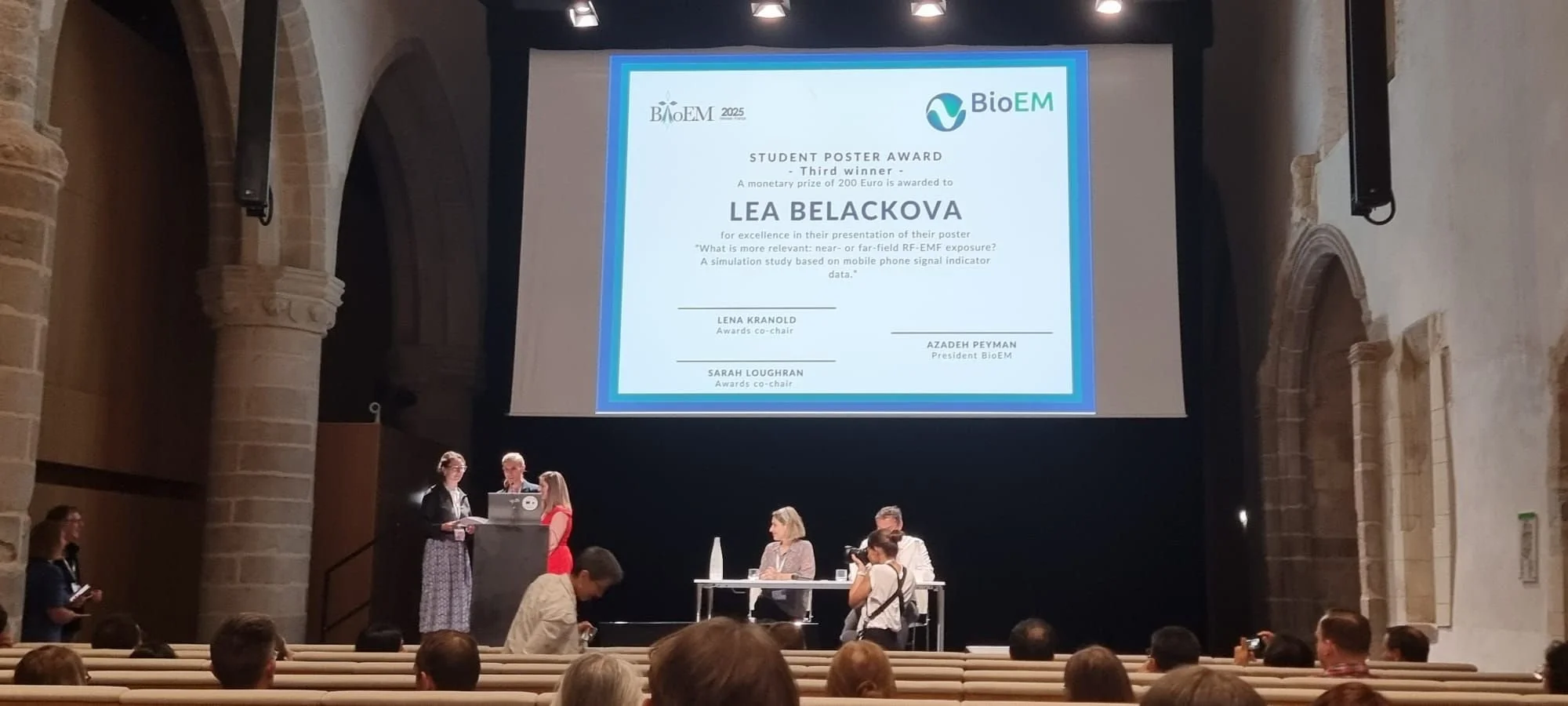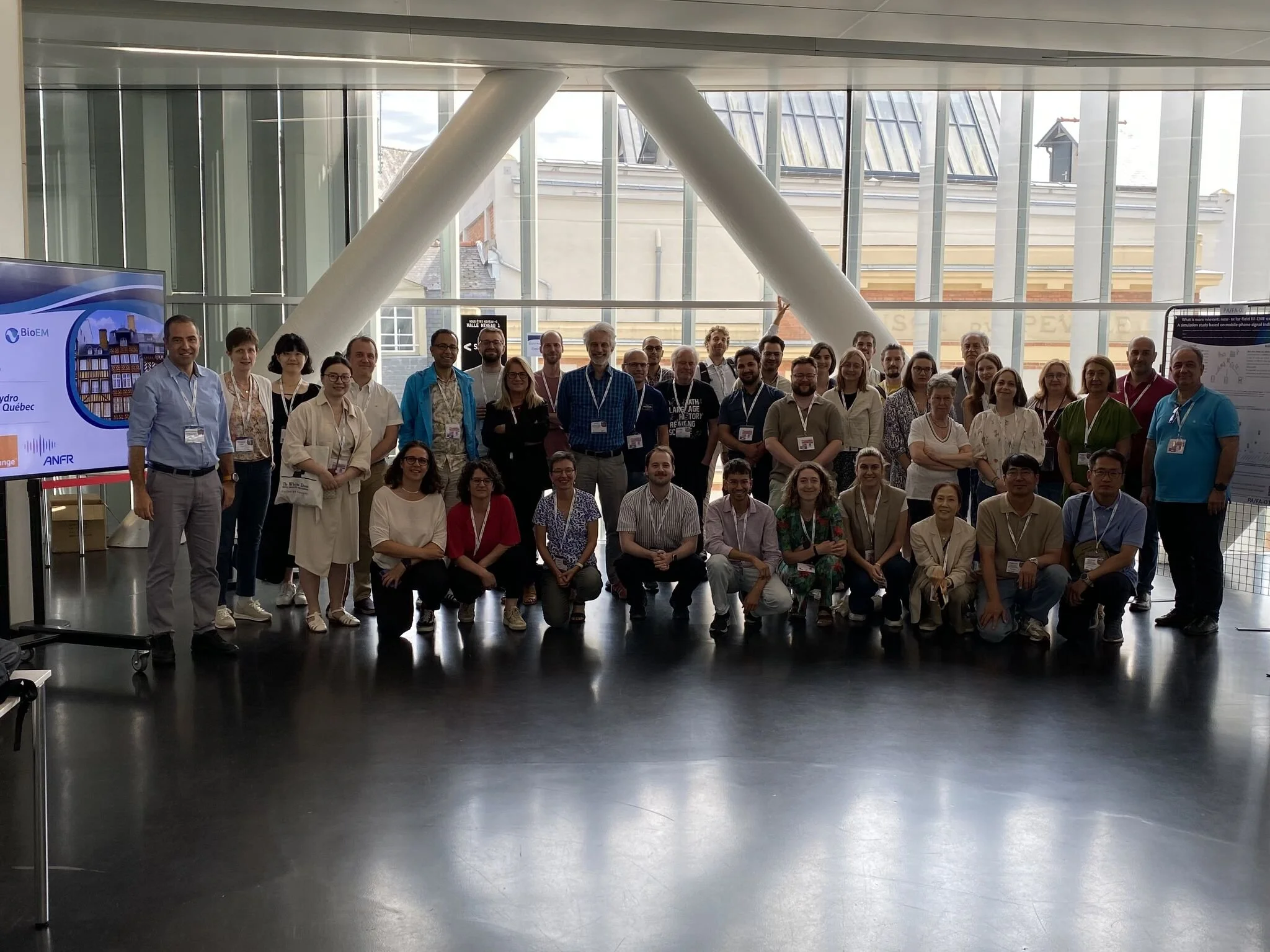ETAIN at BioEM 2025: Showcasing Research at the World’s Leading Conference on Bioelectromagnetics
From 22 to 27 June 2025, the city of Rennes hosted BioEM, the most significant international conference in the field of bioelectromagnetics. Bringing together nearly 300 scientists from around the world, the event served as a major platform for researchers, policymakers, and industry representatives to explore the latest findings on electromagnetic fields (EMF) and health. This year, the ETAIN project was well represented, with multiple researchers presenting their most recent work across a wide range of topics.
Julien Le Friec, from the University of Montpellier, delivered a presentation on the effects of chronic exposure to 26 GHz radiofrequency (RF)EMF on the fly Drosophila melanogaster. His research adds valuable insight into the potential long-term biological impacts of high-frequency electromagnetic fields.
From Utrecht University, Magda Stefanopoulou introduced the planetary health framework being developed within ETAIN during a poster session, while Lea Beláčková contributed a poster exploring the relationship between mobile phone exposure and signal quality. Lea’s work was particularly recognised at the conference, earning her the third Student Poster Award and the Alexandre Legros travel award for the best student poster abstract.
Nekane Sandoval Díez, researcher at Swiss TPH, presented a systematic review on the association between extremely low frequency magnetic fields (ELF-MF) exposure and neurodegenerative diseases, contributing to the growing body of research linking environmental factors and neurological health. [If you want to learn more about Nekane’s work, you can check this article.]
Hamed Jalilian, also from Swiss TPH, presented the development of a dose model, a fundamental step towards understanding how RF-EMF exposure translates into potential health risks.
Hanne Herssens, from Ghent University, shared results from her work on auto-induced downlink exposure at 26 GHz, using a skin model to examine how emerging 5G frequencies interact with biological tissues. [If you want to learn more about Hanne’s work, you can read this article.]
Other notable ETAIN contributions came from the CNRS of the University of Bordeaux, with Emilie Pinet’s presentation on the effects of 700 MHz RF-EMF exposure on cellular stress responses in astrocytes, and Jana Haidar’s work, which focuses on oxidative stress in skin cells caused by 5G signals. Coralie Cayron, from IPBS Toulouse, presented a poster examining the molecular and cellular impacts of 5G, with findings that are relevant to both the ETAIN and GOLIAT projects.
At the special CLUE-H cluster session (the group of representatives from the four major Horizon Europe projects, ETAIN, SEAWave, GOLIAT, and NextGEM) Anke Huss, ETAIN project coordinator from Utrecht University, shared the latest project developments. This meeting served as a valuable moment to exchange insights, align methodologies, and deepen collaboration on experimental studies and exposure assessment. The session attracted over 40 participants, reflecting the shared commitment to advancing research on EMF and health.
Finally, Martin Röösli, from Swiss TPH and also a researcher of ETAIN, was honoured with the prestigious D’Arsonval Award and delivered a plenary lecture on noise and RF-EMF. His talk highlighted striking commonalities and differences between noise and EMF in terms of research methods, burden of disease and risk perception.




